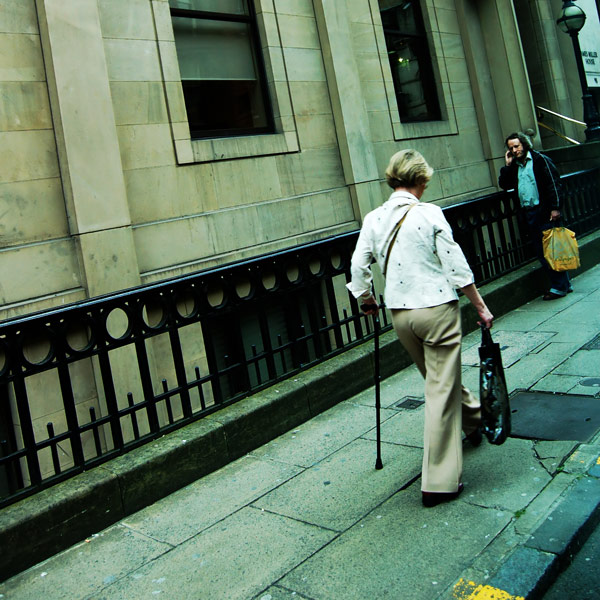
Medications taken to prevent HIV infection in high-risk people appear to work well in “real-life” use, a new study suggests.
During a year of taking pre-exposure prophylaxis (PrEP), only two people out of more than 400 high-risk people became infected with HIV, the virus that causes AIDS. And it seems that those who became infected didn’t take the medication properly, the study said.
The new study found the HIV infection rate was as much as 20 times lower than in several previous HIV studies, background information in the current study said.
Gay and bisexual men at high risk for HIV infection “should be counseled about pre-exposure prophylaxis,” said Dr. Kenneth Mayer, director of HIV Prevention Research at Beth Israel Deaconess Medical Center in Boston, who’s familiar with the study findings. Already, he said, “pharmacy records suggest that tens of thousands are using it.”
But the treatment is not without problems. The most important issue is that PrEP is expensive, potentially costing about $1,300 a month, said study lead author Dr. Albert Liu, clinical research director with the San Francisco Department of Public Health. However, the treatment is covered by most insurance companies, and medication assistance programs are available, according to the U.S. Centers for Disease Control and Prevention.
The treatment can also cause mild side effects, such as stomach upset, loss of appetite and mild headache. But most of these go away soon after starting treatment, according to AIDS.gov.
Pre-exposure prophylaxis combines two drugs — tenofovir and emtricitabine — into one pill, marketed as Truvada. The goal of the treatment is to prevent high-risk people from becoming infected with HIV. The treatment was approved for use in the United States in 2012, background information in the study said.
Gay and bisexual men account for two-thirds of new HIV infections, the study said.
The new study is unique because it provides insight into how the preventive treatment works in the community at large instead of among people recruited for a study, Liu said.
The study tracked more than 400 gay and bisexual men and transgender women who visited sexually transmitted disease clinics in San Francisco and Miami, and a community health center in Washington, D.C. The participants went to the clinics between 2012 and 2015.
All participants received free Truvada. Study treatment continued for 48 weeks.
Based on blood tests of almost 300 participants, the study found that 80 percent or more appeared to have used the therapy consistently, based on levels of the drugs in their bodies.
The two people who contracted HIV during the study appeared to have taken the drug two or fewer times per week instead of daily, as recommended.
The level of other sexually transmitted diseases remained stable among the participants, the study found. The researchers also found that people taking the treatment didn’t increase their level of anal sex without condoms. The percentage engaging in that sexual practice remained steady at about 66 percent.
The people most likely to consistently take the treatment included those with a stable housing situation, and those who engaged in riskier sex — defined as having two condomless anal sex partners in the past three months, the study noted.
Overall, the results provide “strong evidence” for boosting the use of pre-exposure prophylaxis among gay and bisexual men in these types of clinics, Liu said. “We saw higher levels of adherence in those who had higher-risk behaviors, which is encouraging and likely to increase the cost-effectiveness and impact of pre-exposure prophylaxis.”
HIV researcher Julia Marcus, a postdoctoral fellow with the Division of Research at Kaiser Permanente Northern California who’s familiar with the study, put it this way: “We’re seeing that pre-exposure prophylaxis works extremely well when taken.”
However, the study does point to challenges facing health advocates as they promote the use of this treatment.
Five percent of participants stopped taking the medication because of side effects, Liu said.
Then there’s the matter of cost. In this case, study researchers helped participants find access to continue treatment, although they may face copayments and high deductibles if they have insurance to cover it, he said. Most insurance programs, along with Medicaid, cover pre-exposure prophylaxis, Liu said.
There’s also concern because the researchers found that blacks were less likely than others to consistently take the medication; just 57 percent of them did so.
A second study found even more dismal use of PrEP among black people. This study surveyed more than 600 sexually active young gay or bisexual black men from Chicago and found that for those who weren’t HIV-positive, just 4 percent had used pre-exposure prophylaxis.
The surveys were done from 2013-2014. Eighty percent had incomes of less than $20,000 a year. Only half of this group had any health insurance, the study found. Just 40 percent were aware that pre-exposure prophylaxis exists, the survey revealed.
It’s not clear what’s going on, Liu said, although it’s possible that blacks may have more mistrust of the medical system and less knowledge about their health options.
The studies appear in the Nov. 16 issue of JAMA Internal Medicine.
More information
For more about pre-exposure prophylaxis, try AIDS.gov.
Source: HealthDay
Copyright © 2025 HealthDay. All rights reserved.

Leave a Reply